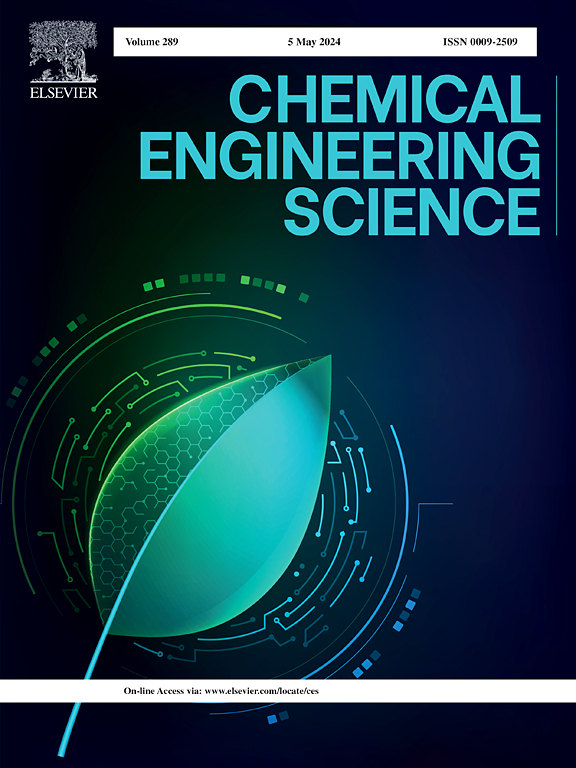Self-adaptive W/O emulsion for reservoir water control: In-situ formation of high internal phase emulsion from ordinary emulsion synergistically stabilized by two surfactants of polyglycerol esters
IF 4.1
2区 工程技术
Q2 ENGINEERING, CHEMICAL
引用次数: 0
Abstract
In many industrial applications, stable high internal phase emulsions (HIPEs) are of great value for stable dispersion and effective delivery of internal phase substances. For example, in recent years, W/O HIPEs have emerged as one of the most promising soft materials for water control in horizontal wells for enhanced oil recovery (EOR), owing to their high viscosity and the Jamin effect. However, the formation of stable W/O HIPEs under low surfactant concentrations and low-energy emulsification conditions remains a challenge. In this study, a feasible strategy is proposed to address the above technical challenges. Under mild stirring (500 rpm) condition, the paraffin oil containing 3 % (w/w) of a emulsifier blend of polyglyceryl-3-dioleate (POOC) and polyglycerol polyricinoleate (PGPR) efficiently emulsifies water to form a stable and uniformly dispersed W/O emulsion. The emulsion viscosity can be continuously tuned from low to high by varying the water-to-oil volume ratio from 1:1 to 9:1. The finally formed W/O HIPEs exhibit high viscosity (1829 mPa·s), strong viscoelasticity (tan δ = 0.19), and excellent coalescence stability (no phase separation over 30 days) at 60 °C, making them suitable for water control in EOR application. The key role of POOC + PGPR composite surfactant in the formation and stabilization of emulsions was elucidated using diffusion-ordered 1H NMR (DOSY) spectrogram and molecular dynamics simulations.
用于油藏控水的自适应水乳状液:由两种表面活性剂聚甘油酯协同稳定的普通乳液原位形成高内相乳液
在许多工业应用中,稳定的高内相乳剂(HIPEs)对内相物质的稳定分散和有效输送具有重要价值。例如,近年来,由于高粘度和Jamin效应,W/O hipe已成为水平井控水以提高采收率(EOR)的最有前途的软材料之一。然而,在低表面活性剂浓度和低能乳化条件下形成稳定的W/O HIPEs仍然是一个挑战。在本研究中,提出了一个可行的策略来解决上述技术挑战。在温和搅拌(500 rpm)的条件下,含有3 % (w/w)的聚甘油酯-3-二油酸酯(POOC)和聚甘油酯-聚蓖麻油酸酯(PGPR)乳化剂的石蜡油能有效地乳化水,形成稳定均匀分散的w/ O乳液。通过改变水油体积比从1:1到9:1,乳液粘度可以从低到高连续调节。最终形成的W/O HIPEs在60 ℃下具有高粘度(1829 mPa·s)、强粘弹性(tan δ = 0.19)和优异的聚结稳定性(30 天内无相分离),适用于提高采收率的控水应用。通过扩散有序1H NMR (DOSY)谱图和分子动力学模拟,阐明了POOC + PGPR复合表面活性剂在乳状液形成和稳定中的关键作用。
本文章由计算机程序翻译,如有差异,请以英文原文为准。
求助全文
约1分钟内获得全文
求助全文
来源期刊

Chemical Engineering Science
工程技术-工程:化工
CiteScore
7.50
自引率
8.50%
发文量
1025
审稿时长
50 days
期刊介绍:
Chemical engineering enables the transformation of natural resources and energy into useful products for society. It draws on and applies natural sciences, mathematics and economics, and has developed fundamental engineering science that underpins the discipline.
Chemical Engineering Science (CES) has been publishing papers on the fundamentals of chemical engineering since 1951. CES is the platform where the most significant advances in the discipline have ever since been published. Chemical Engineering Science has accompanied and sustained chemical engineering through its development into the vibrant and broad scientific discipline it is today.
 求助内容:
求助内容: 应助结果提醒方式:
应助结果提醒方式:


